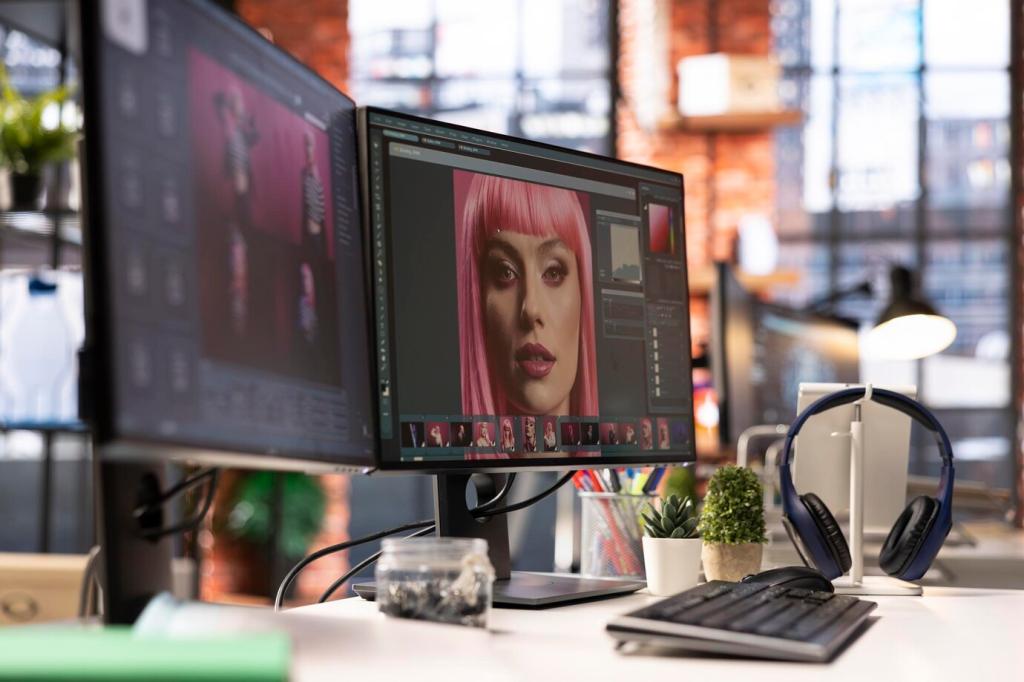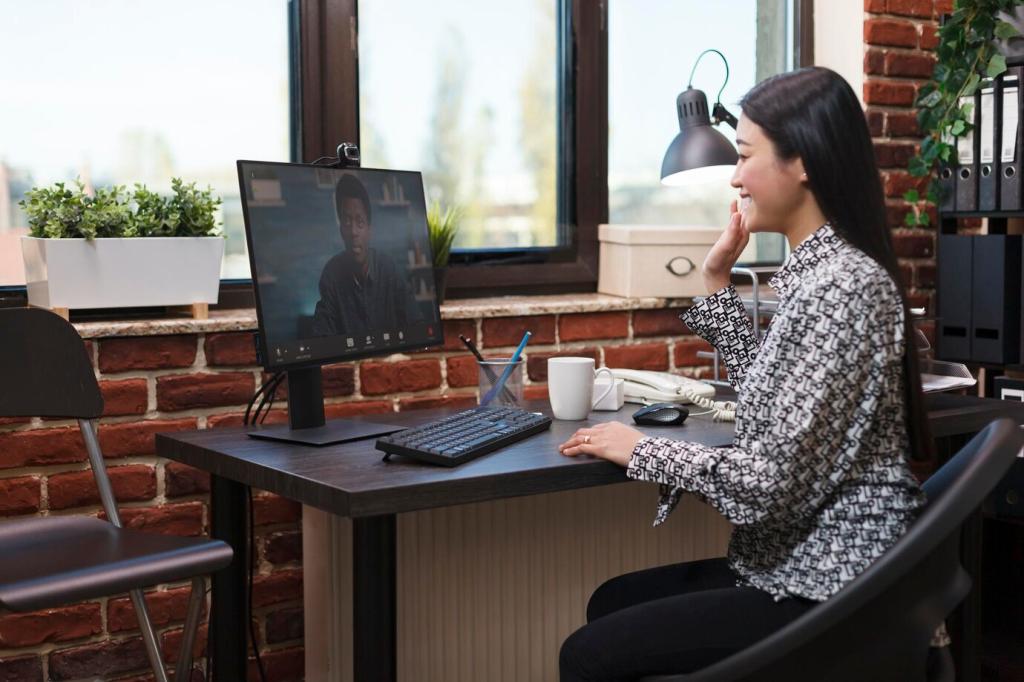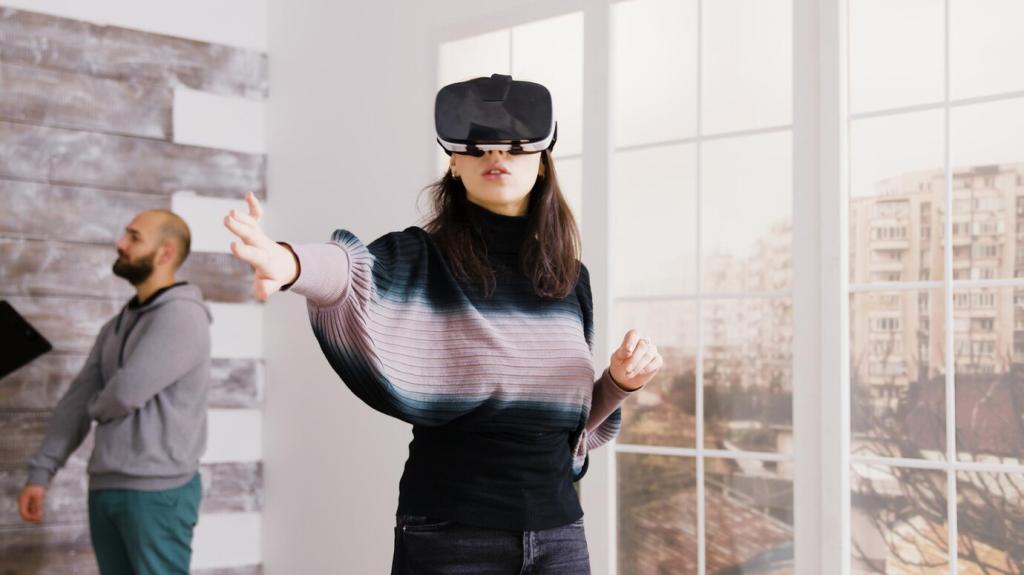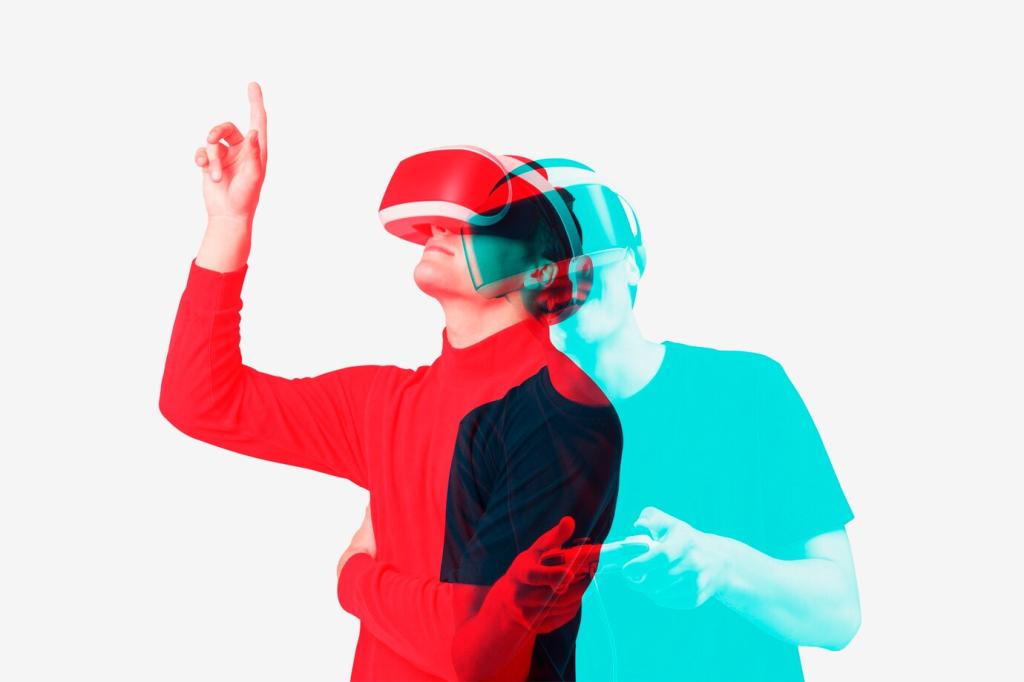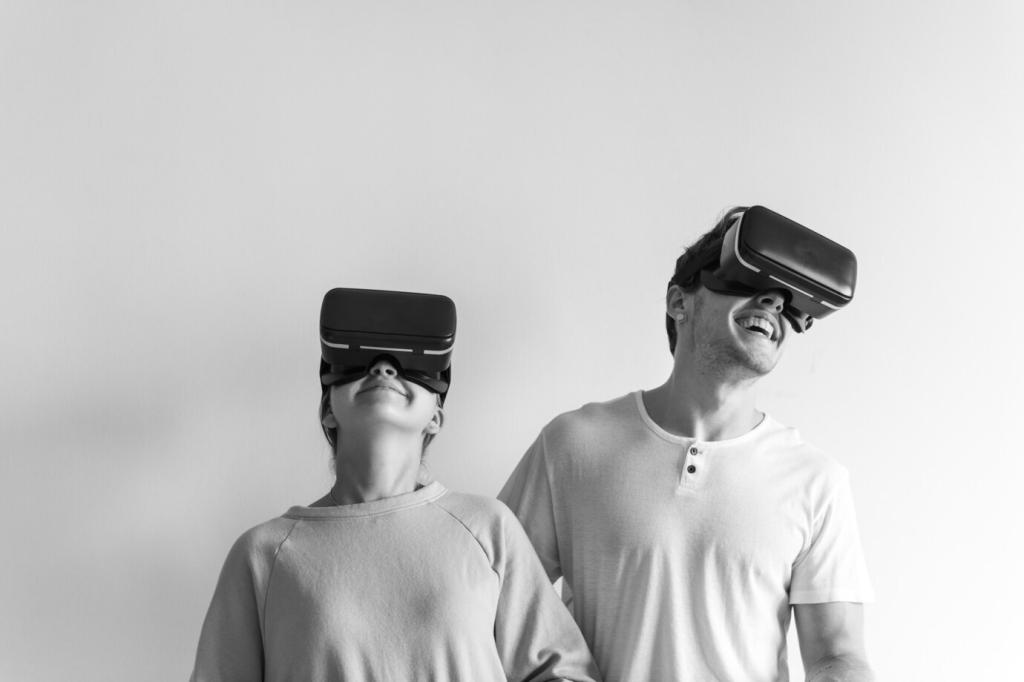Accessibility, Comfort, and Ethical Presence
Support large type toggles, high-contrast modes, and captions for spatial audio cues. A beta tester with low vision praised an adjustable focus panel, reminding us that inclusive features often become everyone’s favorite convenience.
Accessibility, Comfort, and Ethical Presence
Keep key elements within comfortable focal ranges and avoid sudden camera moves. Offer teleport and smooth locomotion options. Invite readers to share their comfort presets, and subscribe for our evolving checklist that blends ergonomics with expressive design.

